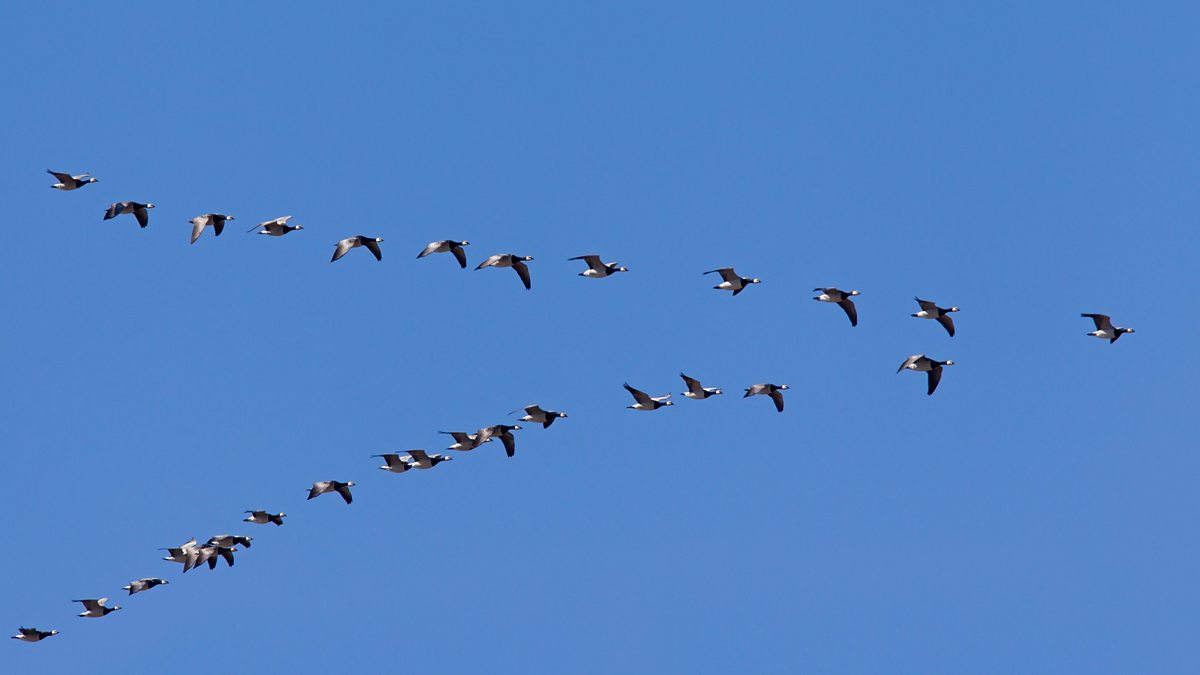
Animal migration is a widespread phenomenon observed across various species, marked by the seasonal and often long-distance movement of animals from one habitat to another. This process is crucial for survival and is driven by multiple factors, including food availability, reproductive needs, and climatic conditions.
Seasonal Migration

The most common type of migration is seasonal migration, where animals move in response to changes in the environment associated with different seasons. For instance, many bird species migrate south during the winter to avoid harsh weather and find food. Birds like the Arctic tern are renowned for their seasonal journeys, covering distances that can exceed 19,000 kilometers as they travel from polar breeding grounds to temperate wintering areas[3][4]. Similarly, wildebeests in the Serengeti undertake a circular migration pattern, moving in search of fresh grazing grounds as the seasons change[6][10].
In addition to birds, terrestrial mammals such as caribou and some species of fish, like Atlantic salmon, also engage in seasonal migrations. Atlantic salmon, for example, migrate thousands of kilometers from ocean feeding grounds back to the rivers where they were born to spawn[10][11].
Reproductive Migration

Reproductive migration is another significant driver of animal movement. Many species migrate to find more suitable environments for breeding or raising their young. Salmon exemplify this with their life cycle; after maturing in the ocean, they return to freshwater rivers to spawn, where conditions are optimal for the survival of their offspring[3][6][8].
Insects also exhibit this type of migration. Monarch butterflies, for example, travel great distances to find suitable breeding locations and forage opportunities. Their journey involves multiple generations, as no single butterfly completes the entire round trip[10][11].
Climate and Environmental Migration

Animals also migrate to avoid unfavorable climates or environmental conditions. Many species instinctively seek warmer temperatures or more abundant food sources during harsh seasons. Monarch butterflies migrate from Canada to Mexico to escape cold, frost-laden winters, relying heavily on milkweed for sustenance along the way[2][8]. Similarly, various fish and crustaceans migrate based on local climate changes, adjusting their patterns to ensure survival through different environmental conditions[4][6].
Altitudinal and Tidal Migration
In addition to horizontal movements across vast distances, some animals engage in altitudinal and tidal migrations. Altitudinal migration refers to the movement of animals, particularly in mountainous regions, where species may move up and down altitudes in response to seasonal climatic changes. For example, certain bird species migrate from breeding sites in higher elevations to lower areas to evade severe weather conditions[4].
Tidal migration, on the other hand, includes movements associated with ocean tides. Many marine organisms, like certain species of crabs and small fish, migrate in and out of intertidal zones based on the tidal cycles. These migrations help facilitate feeding and mating[4][11].
Why Animals Migrate

The primary motivations for migration encompass the search for food, favorable weather, and suitable reproductive environments. Many animals rely on the seasonal abundance of resources that vary with climatic conditions. For example, during the dry season in Tanzania, wildebeests, zebras, and gazelles migrate in herds seeking fresh grass and water, essential for their survival[3][6].
Furthermore, advancements in our understanding of migration have revealed that animals use various methods for navigation, such as cues from the sun, stars, and Earth's magnetic field. These innate navigational skills enable creatures like birds to undertake their long migratory journeys successfully[3][11].
Conclusion

Animal migration is a complex and vital behavior observed across numerous species. Whether driven by the need for food, favorable climates, or reproductive opportunities, migration plays an essential role in the life cycles of many organisms. As ecosystems continue to change due to human impact and global warming, understanding these migratory patterns becomes even more critical for conservation efforts aimed at protecting migratory corridors and habitats vital for these species' survival. As research continues to evolve, so too will our understanding of the intricate mechanisms and drives behind one of nature's most fascinating phenomena.
Get more accurate answers with Super Pandi, upload files, personalized discovery feed, save searches and contribute to the PandiPedia.
Let's look at alternatives:
- Modify the query.
- Start a new thread.
- Remove sources (if manually added).